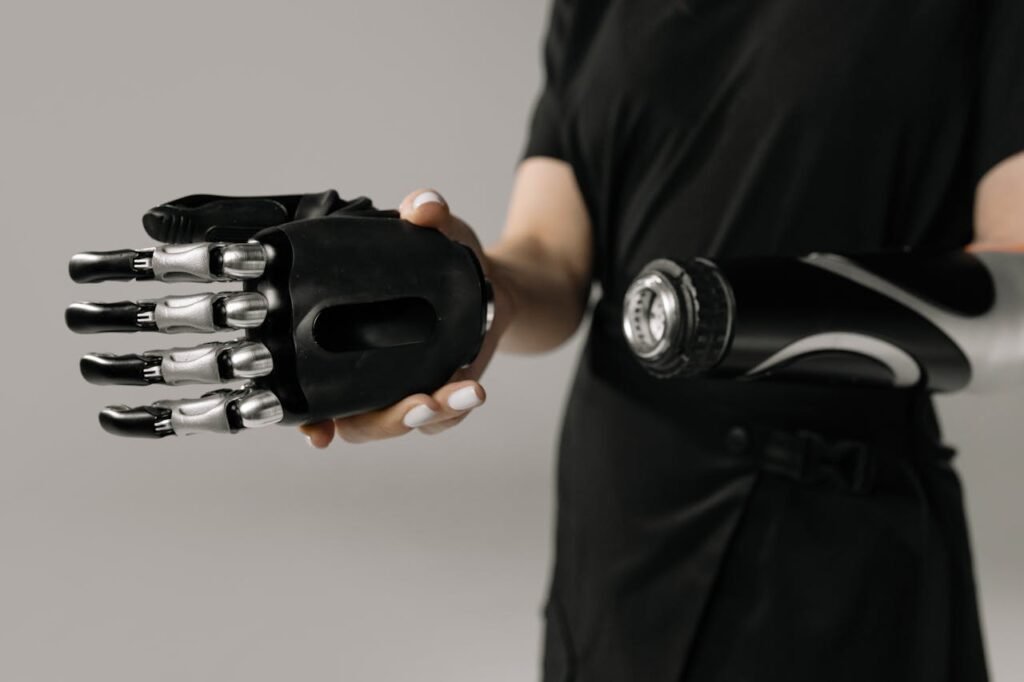Losing a finger changes more than just how your hand looks. It affects how you do everyday things—like holding a pen, buttoning a shirt, or picking up a cup of tea. It can even touch your confidence.
A finger prosthesis can help bring back much of what you lost. It can make daily tasks easier, give you back control, and help you feel more like yourself again. But there’s one question almost everyone asks before getting one:
How long will it take to get used to it?
The answer is not the same for everyone. Some people feel comfortable in weeks, while for others, it can take months. It depends on many things—your body, your daily activities, the type of prosthesis, and how much practice you put in.
In this guide, we’ll walk you through every part of the journey—from the first fitting to the moment the prosthesis feels like a natural part of your hand. We’ll talk about what you can expect each step of the way, share tips to speed up your adjustment, and show you how patience and practice can make all the difference.
Understanding What Adjustment Really Means
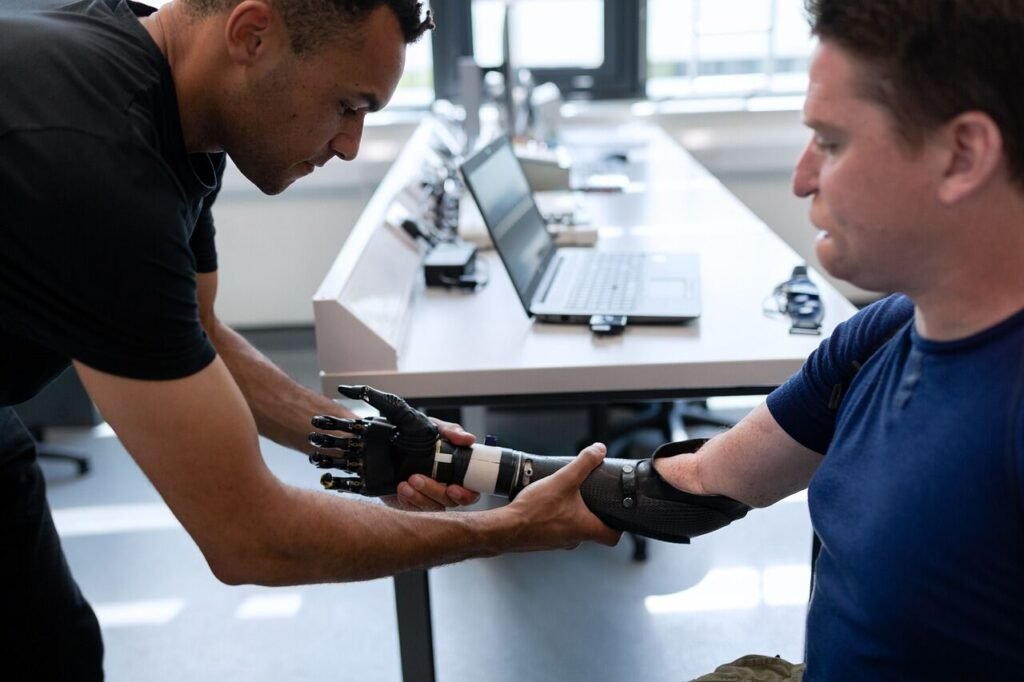
When people hear “adjusting to a finger prosthesis,” they often think it’s just about learning to move with it. But it’s more than that.
It’s about teaching your brain and body to work together again in a new way. Your hand will need to rediscover how to grip, hold, and feel secure with objects. And your mind will need to trust that the prosthesis can help you do it.
This process is physical, but it’s also emotional. Some days will feel like big wins. Others may feel slow. Both are normal and part of the journey.
The Physical Side of Adjustment
Physically, your muscles, tendons, and nerves must adapt to a slightly different way of working. Even if your prosthesis is purely cosmetic, it changes the way your hand balances and moves.
If you have a functional prosthesis—like a mechanical finger or a bionic one—you’ll also learn to control it through muscle signals or small movements. This is like learning a new skill. The more you practice, the smoother it becomes.
The Mental and Emotional Side
Your mind needs time too. At first, a prosthesis can feel strange or even awkward. Some people feel self-conscious wearing it. Others may worry about what people will say or notice.
But as you start using it more, you’ll slowly stop thinking about it. It will simply be part of you. That’s when the magic happens—you’ll pick up a pen or hold a coffee without even realizing you’re doing it differently than before.
Factors That Affect How Long Adjustment Takes
The time it takes to feel comfortable with a finger prosthesis is different for everyone. That’s because no two people have the same body, lifestyle, or type of prosthesis.
Some people adjust in weeks. Others need several months before they feel truly natural with it. The key is to understand what influences this timeline.
Your Type of Prosthesis
There are three main kinds: cosmetic silicone prostheses, mechanical fingers, and bionic fingers.
Cosmetic ones are mainly for appearance and basic balance. They’re light and don’t require much training. Mechanical and bionic fingers, however, can move and grip. They offer more function but also require more practice to master.
Your Daily Activities
If you use your hands a lot for work, hobbies, or sports, you’ll likely need more time to adjust. But you may also progress faster because you’re using your prosthesis more often.
A person who types all day might focus on precision and speed. A person who works in a workshop might focus on grip strength and tool handling.
Your Physical Condition
Your muscle strength, skin health, and overall fitness make a difference. People who maintain good physical health often find the transition easier.
If your muscles are weak or if your skin is sensitive, you may need extra time to build up strength and tolerance.
Your Dedication to Practice
This is one of the biggest factors. Even with the most advanced prosthesis, improvement only comes with consistent use.
The more time you spend practicing, the quicker you’ll feel at ease. Short, daily practice sessions often work better than long but rare ones.
The Stages of Adjustment
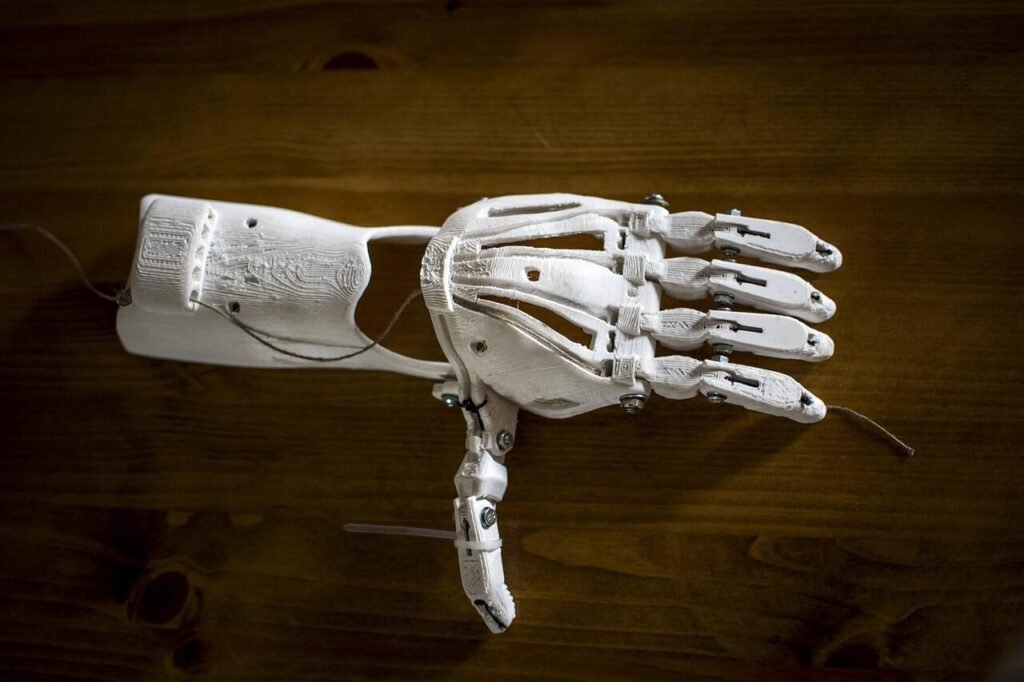
Getting used to a finger prosthesis is a step-by-step process. It doesn’t happen all at once. Understanding these stages can make the journey easier because you’ll know what’s coming and why each step matters.
Stage 1: The First Fitting
The first time you wear your prosthesis is both exciting and a little overwhelming. You’ll probably notice its weight, texture, and fit right away.
If it’s a custom-made one, it should feel snug but not tight. You might need small adjustments in the early days to make it more comfortable. This is normal and part of the fine-tuning process.
During this stage, it’s important to simply wear it for short periods. Your skin and muscles need to get used to the contact. Think of it like breaking in a new pair of shoes—you start small before wearing them all day.
Stage 2: Basic Use and Familiarity
Once you’re comfortable wearing it for an hour or two without irritation, you can start practicing simple tasks. This could mean picking up light objects, holding utensils, or turning pages in a book.
At this point, you’re training your muscles and brain to work with the prosthesis. It’s about building confidence, not speed. Every successful movement, no matter how small, is a win.
Stage 3: Functional Skills
This is where you begin doing more complex movements. If you have a mechanical or bionic finger, you’ll start controlling grip strength, speed, and precision.
You might practice holding a cup without crushing it or typing without hitting the wrong keys. The more real-life situations you practice, the quicker your progress will be.
Stage 4: Integration Into Daily Life
This is the stage where your prosthesis starts feeling like a natural part of you. You’ll reach for things without thinking. You’ll start to forget which hand is your prosthetic one because it works so seamlessly in your life.
Reaching this stage can take anywhere from a few weeks to several months. It depends on all the factors we talked about earlier—your prosthesis type, activity level, health, and practice routine.
Common Challenges and How to Overcome Them
Almost everyone faces a few bumps on the road to full adjustment. Knowing these challenges in advance can help you face them with patience.
Skin Sensitivity
It’s common for the skin around the prosthesis to feel sore at first. This happens because it’s in constant contact with a new surface.
The best approach is to gradually increase your wear time. If your skin becomes red or irritated, give it a break and apply a gentle moisturizer recommended by your prosthetist.
Muscle Fatigue
Your hand and arm may get tired faster in the beginning. That’s because your muscles are working in slightly different ways.
To help, do short practice sessions instead of long ones. Over time, your strength and stamina will improve naturally.
Feeling Self-Conscious
It’s normal to feel a little awkward at first, especially in public. People may look out of curiosity, not judgment.
The more you use your prosthesis in daily life, the less you’ll think about others’ reactions. Many people find that wearing their prosthesis proudly actually sparks positive conversations.
Practical Tips to Speed Up Adjustment
Getting used to your finger prosthesis doesn’t have to feel like a slow uphill climb. With the right approach, you can make progress faster and feel more confident every day.
Start Small and Build Up
Don’t try to do everything on day one. Begin with short wear times—maybe just 30 minutes a day—and slowly increase them. This helps your skin, muscles, and nerves adapt without feeling overwhelmed.
Once you’re comfortable wearing it for longer, add light activities like holding a spoon, opening a drawer, or flipping through a notebook.
Make Practice a Daily Habit
Small, frequent practice sessions are far more effective than long, irregular ones. Ten to fifteen minutes of focused use two or three times a day works wonders.
You could use this time to do activities you enjoy—like pouring yourself a drink, typing a short message, or even playing a simple game that requires hand movement.
Use Both Hands Together
Even if you’ve adapted to doing most things with one hand, try to involve your prosthetic hand in daily activities. This not only strengthens your muscles but also teaches your brain to see the prosthesis as part of your normal movement pattern.
Simple tasks like folding clothes, cutting vegetables, or carrying a bag can be great for this.
Stay Patient with Your Progress
Progress isn’t always in a straight line. Some days will feel great, while others may feel slow. That’s normal.
Focus on small wins—like being able to pick up a slippery object or write a little faster than before. Over time, these small victories add up to big changes.
Week-by-Week Adjustment Approach
While everyone’s timeline is different, having a clear roadmap can help keep you motivated. Here’s a general week-by-week guide you can adapt to your own pace.
Week 1: First Contact
Focus only on getting used to the feel of your prosthesis. Wear it for short sessions and remove it before discomfort sets in.
Try very light activities like holding a pen, turning a page, or lifting an empty cup.
Your goal here is simply to build comfort and reduce the “strange” feeling.
Week 2: Simple Movements
Increase wear time to one or two hours a day. Begin using your prosthesis for simple daily tasks—opening jars, holding utensils, or pressing buttons.
If it’s a functional prosthesis, start basic training with your prosthetist to learn the control system.
Week 3: Confidence Building
By now, you should be wearing it for most of your day. Start tackling tasks that require more precision or strength, such as writing for a few minutes, using scissors, or typing.
You’ll notice your movements becoming smoother.
Week 4: Everyday Integration
Use your prosthesis in as many daily activities as possible—cooking, grooming, carrying light bags.
If you play a sport or instrument, start light practice sessions.
The more you use it in real-life contexts, the faster it becomes second nature.
Weeks 5–8: Refinement and Speed
By now, your prosthesis should feel comfortable and reliable. Focus on improving your speed, grip strength, and coordination.
If you have a bionic or mechanical finger, challenge yourself with more complex tasks like peeling fruit, using a camera, or doing light DIY work.
Real-Life Examples of Adjustment Journeys
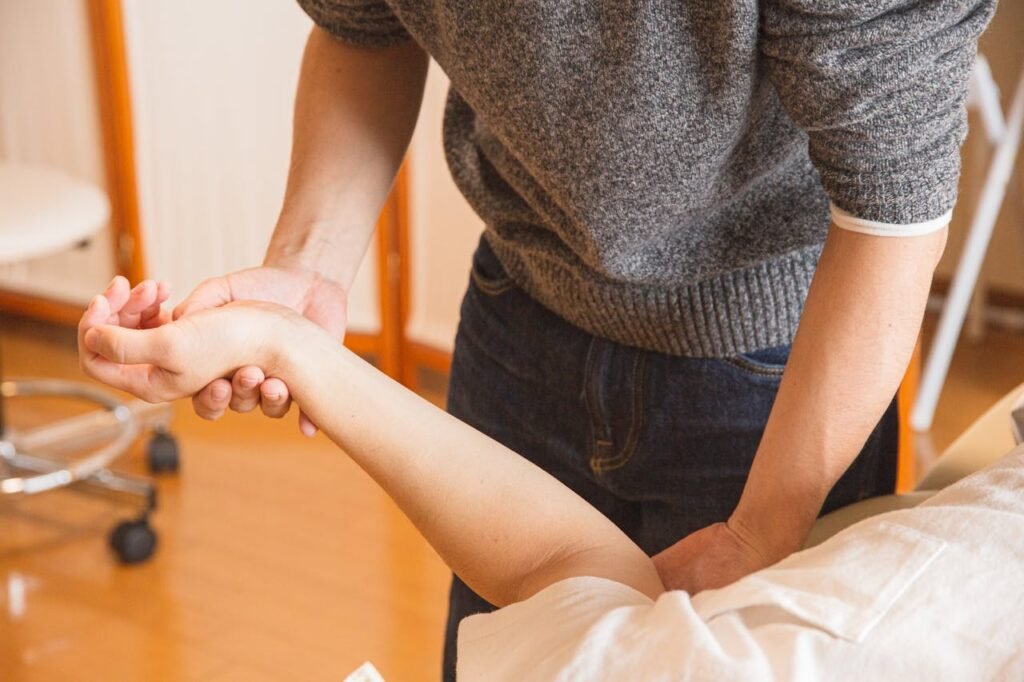
Hearing how others adapted can be both inspiring and practical.
Aarav’s Story
Aarav, a 34-year-old engineer, lost part of his index finger in an accident. He started with short daily wear, then added small mechanical tasks at work like tightening screws and using a mouse.
By week six, he was typing at his old speed and felt confident in meetings, even when showing diagrams with his prosthetic finger.
Meera’s Story
Meera, a schoolteacher, had a cosmetic finger prosthesis. At first, she wore it only in class. Gradually, she began using it at home to hold chalk, arrange books, and help with cooking.
She says the emotional boost was just as important as the physical help—it gave her back her confidence in front of her students.
Long-Term Care for Your Finger Prosthesis
Once you’ve adjusted to your prosthesis, the focus shifts to keeping it in top condition and making sure it continues to work well for years. Good care also helps prevent discomfort and extends the life of the device.
Daily Cleaning
A clean prosthesis feels better and lasts longer. For cosmetic silicone fingers, wipe them daily with a soft damp cloth and mild soap. Avoid strong chemicals, as they can damage the surface.
For mechanical or bionic fingers, follow the cleaning instructions from your prosthetist. Usually, this means gently wiping the surface and keeping joints free from dust or crumbs.
Skin Care
Your skin will always be in contact with the prosthesis, so keeping it healthy is important. Wash your hands regularly, dry them well, and apply a non-greasy moisturizer at night.
If you notice redness, blisters, or persistent irritation, let your prosthetist know right away. Small adjustments to fit can solve these issues before they get worse.
Storage
When you’re not wearing your prosthesis, store it somewhere cool and dry, away from direct sunlight. Heat can affect silicone texture, and moisture can harm mechanical parts.
For bionic prostheses, always switch off the device before storing it to save battery and protect electronics.
Advanced Training Techniques
Once you’re comfortable with basic tasks, you can take your skills to the next level. Advanced training helps you perform tasks faster, with more precision, and with less effort.
Task Variation
Practice a variety of activities, not just the same ones every day. Try gripping objects of different shapes, sizes, and textures. Move from smooth surfaces to rough ones, from light objects to heavier ones.
This variety strengthens your adaptability and makes your hand ready for real-life surprises.
Speed Drills
Set a timer and challenge yourself to complete a task faster than before—like stacking coins, typing a short message, or cutting fruit. This not only improves speed but also builds muscle memory.
Strength Training
For mechanical and bionic fingers, stronger muscles mean better control. Light resistance bands or stress balls can help build hand and forearm strength. Always check with your prosthetist before starting new exercises.
Real-World Simulations
Rehearse the tasks you find most challenging in your daily life. If you struggle with tying shoelaces, practice it repeatedly in a relaxed setting until it feels natural.
Adapting to Different Prosthesis Types
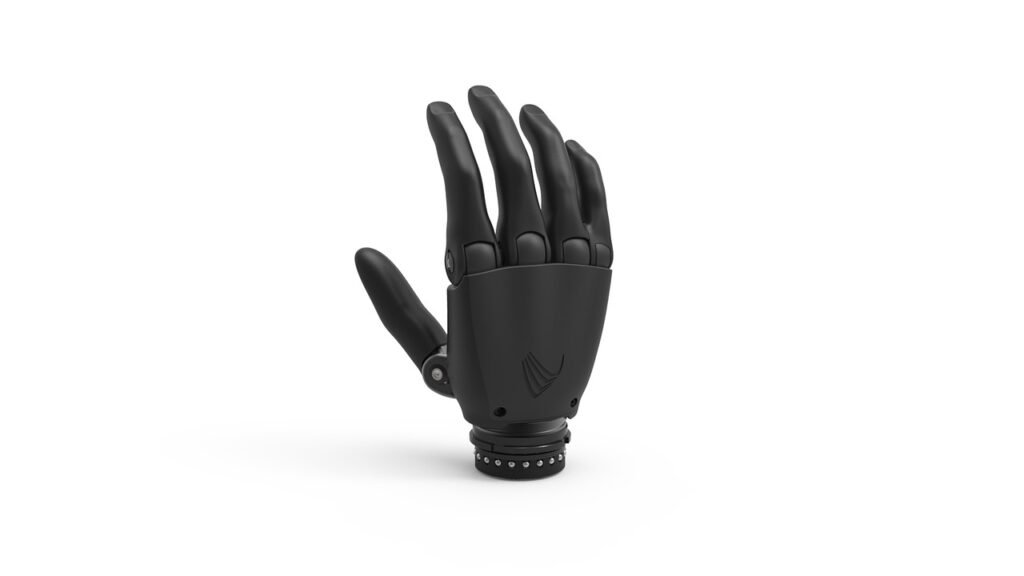
Different types of finger prostheses require different adjustment paths. Understanding this helps you prepare for what’s ahead.
Cosmetic Silicone Fingers
These are the quickest to adjust to because they don’t require mechanical control. Most people feel comfortable within a week or two. The focus here is on appearance and basic balance, so the main challenge is getting used to the feel and fit.
Mechanical Fingers
These require you to move the prosthesis using natural hand or wrist movements. They give you functional grip but may need more time—typically a few weeks to a couple of months—to master control and precision.
Bionic Fingers
Bionic fingers read signals from your muscles and translate them into movement. They offer the highest level of control and versatility, but they also demand the most training. Some users become fluent in a month, while others need three to six months to feel completely natural.
Staying Motivated in the Long Run
Once the novelty wears off, it’s easy to fall into routine. But consistent use keeps your skills sharp.
Set Personal Goals
Maybe you want to learn a musical instrument, improve your handwriting, or master cooking with both hands again. Goals give you something to work toward and keep the journey exciting.
Celebrate Milestones
Don’t wait for huge breakthroughs to celebrate. Each time you achieve something new—no matter how small—acknowledge it. This keeps your mindset positive.
Join a Support Network
Connecting with others who use prostheses can be incredibly motivating. They can share tips, recommend products, and remind you that you’re not alone in this journey.
Working With Your Prosthetist and Rehab Team
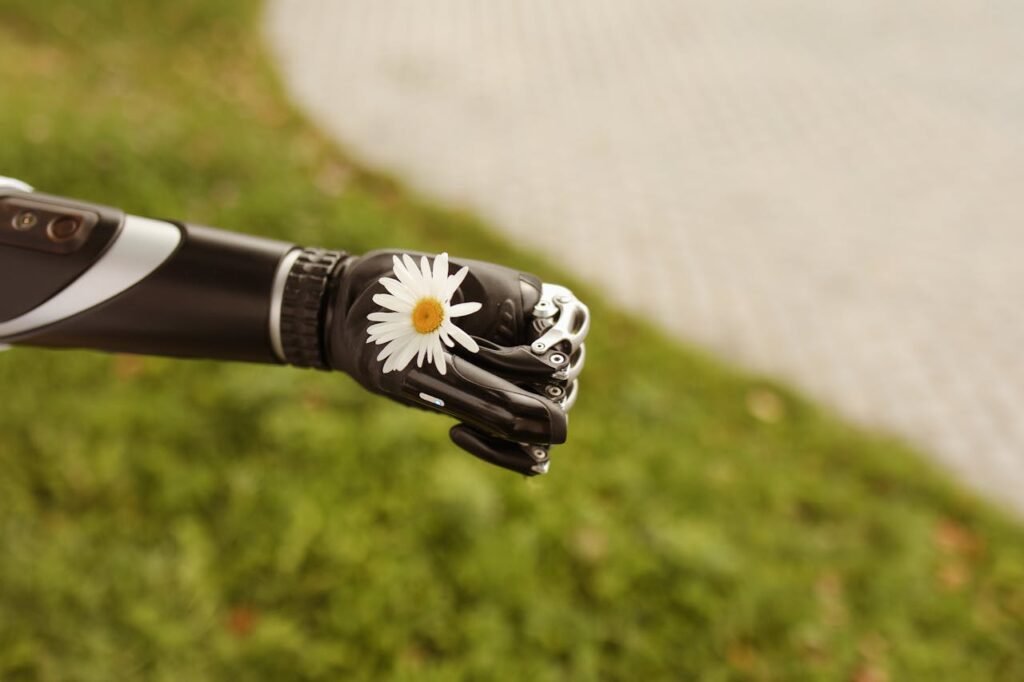
Adjusting to a finger prosthesis is not a journey you take alone. Your prosthetist and rehabilitation specialists are your partners every step of the way. Knowing how to work with them can make your progress faster and smoother.
The Role of Your Prosthetist
Your prosthetist is the person who designs, fits, and adjusts your prosthesis. They understand not just the technical details, but also how your daily life shapes your needs.
During your fittings, be open about what feels right and what doesn’t. If something rubs, pinches, or feels loose, tell them immediately. Even a small adjustment can make a huge difference in comfort and usability.
Regular Check-Ins Matter
Don’t think of appointments as one-time events. Schedule regular follow-ups, especially in the first few months. Your prosthetist can track your progress, make refinements, and show you new techniques for better use.
Sometimes, they may recommend minor upgrades or additional attachments that can make certain tasks easier.
Working With Occupational Therapists
Occupational therapists (OTs) teach you how to use your prosthesis in daily life. They’ll guide you through activities like writing, cooking, or carrying groceries.
An OT can also create a personalized exercise plan to build strength and coordination, ensuring your prosthesis works with you—not against you.
Honest Communication Is Key
It’s tempting to downplay discomfort or avoid mentioning frustrations. But honesty helps your team help you. If you’re struggling with a certain task, let them know. They can often find a workaround or tweak your technique.
Emotional Support from the Team
Beyond the technical side, your rehab team is there to encourage you. They understand the emotional ups and downs that come with prosthesis use and can connect you with peer support groups or counseling if needed.
Life After Adjustment
Once your prosthesis becomes part of your everyday life, things start to feel different—not just physically, but emotionally too. Tasks that once felt impossible start to feel effortless. You begin to move without thinking about which finger is prosthetic and which is natural.
You’ll notice the small joys first—holding a child’s hand, turning a key, or enjoying a hobby you had set aside. Then the bigger ones—returning to work with confidence, picking up sports again, or simply feeling like yourself when you look in the mirror.
This stage is not about “getting back to normal.” It’s about building a new normal that’s strong, capable, and uniquely yours.
Staying Connected to Your Progress
Even after you’ve adjusted, keep practicing and challenging yourself. Try new activities, explore different grips, and find ways to make your prosthesis work harder for you. This ongoing curiosity will keep your skills sharp for years to come.
Frequently Asked Questions About Adjustment
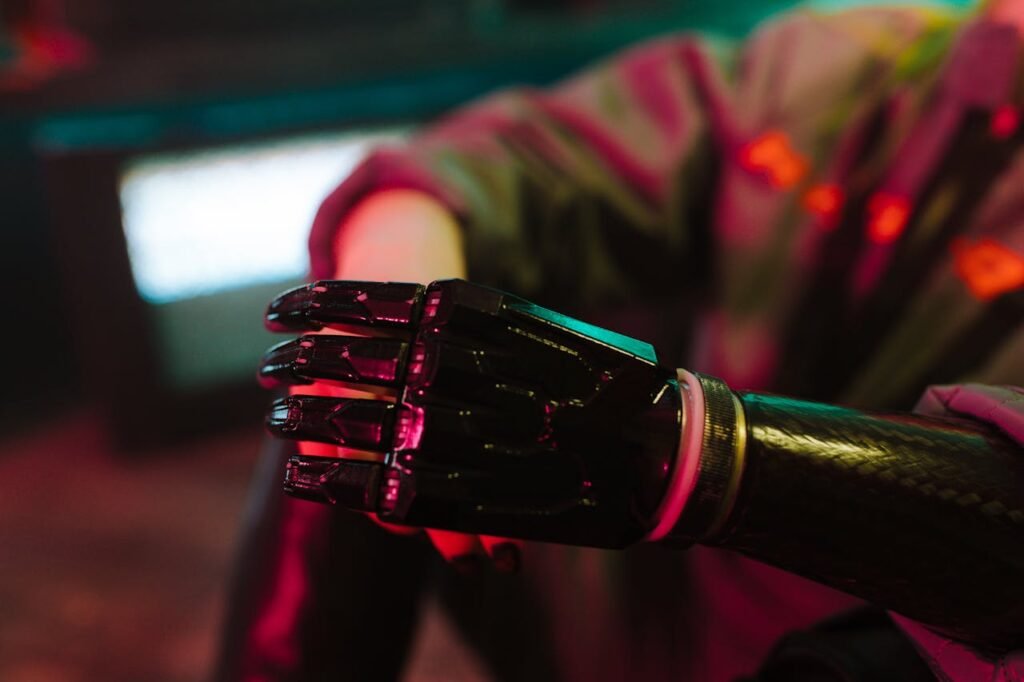
Will I ever forget I’m wearing a prosthesis?
Yes—many people reach a point where using their prosthesis feels completely natural. It’s similar to how wearing glasses or a watch becomes second nature.
What if I don’t adapt as quickly as I hoped?
Everyone’s pace is different. What matters is steady progress, not speed. If something is slowing you down, talk to your prosthetist—they can adjust the fit or suggest training exercises.
Can I damage my prosthesis by using it too much?
Prostheses are built for daily use. As long as you follow care instructions and avoid extreme conditions, you can use it for most activities without worry.
Is it worth upgrading to a more advanced prosthesis later?
Many users start with a simpler model and later move to a more functional one once they’re comfortable. Your needs and technology can change over time, so upgrades can be worth considering.
Your Next Step Toward Confidence and Independence
If you’re thinking about getting a finger prosthesis—or you already have one but want to get the most out of it—remember this: the journey is easier with the right team by your side.
At RoboBionics, we build prostheses that are not just advanced but also affordable and made with care right here in India. Our Sense of Touch™ technology brings a level of control and connection that feels truly life-changing.
We don’t just give you a device—we give you the guidance, training, and support you need to make it part of your life. From your first fitting to the moment you stop thinking about your prosthesis and simply start living again, we’re with you.
You don’t have to wonder how long it will take to adjust. You just have to take the first step.
Book your free demo today and see for yourself how life with the right prosthesis can feel.



